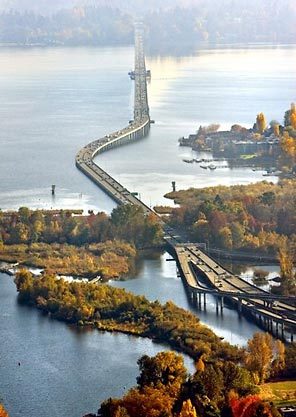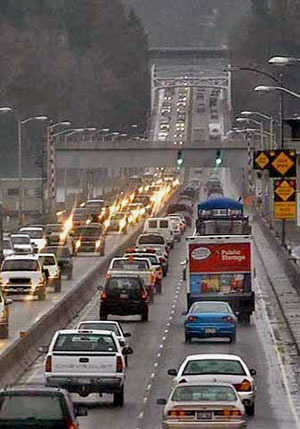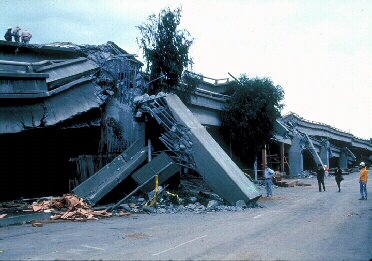Wednesday, August 11, 2004, 12:00 AM.
Houston's light rail making a real dent in city's car traffic
By Mark Babineck
The Associated Press
HOUSTON — Once called the "train to nowhere," Houston's new rail line between downtown and the Astrodome is earning a few new nicknames: "Danger Train," the "Wham Bam Tram," "A Streetcar Named Disaster."
More than 50 collisions have occurred along the 7.5-mile route since it opened in November, most of them with cars making illegal turns across the tracks.
Rail promoters promised the sleek, gray trains would take cars off the road — "They've just done it one car at a time," said John Gaver, who started the Wham-Bam-Tram counter, a Web site that tallies each crash.
The MetroRail averages six crashes a month — a rate 20 times worse than the average for the nation's 17 light-rail systems, according to the Federal Transit Administration.
Most of the wrecks are minor and injury-free, and the soft rubber noses on the quiet, 200-passenger trains usually don't suffer much damage. All but one of the crashes was blamed on error by the car drivers, leaving motorists and their insurance carriers liable for any medical costs or damage to vehicles or trains.
Joe Kittrell, a 65-year-old barber, is among the few people injured in a crash.
Kittrell was leaving the downtown Sears store Dec. 19 and took an unfamiliar route when he turned left on a green light. His next memory is waking up in a hospital a day and a half later with broken ribs. He learned that a train smacked into his truck, pushing it at least 75 yards.
Kittrell says he never saw a no-left-turn sign.
The Metropolitan Transit Authority of Harris County, known as Metro, initially blamed drivers, saying Houstonians are 2-1/2 times more crash-prone than motorists elsewhere, according to the National Highway Traffic Safety Administration.
Still, Metro commissioned the Texas Transportation Institute to see if the transit authority could do anything to reduce crashes. The institute suggested the transit authority change the route's traffic-light sequences, warning signs and other markers, which it did.
If the transit authority had followed an early recommendation to elevate the tracks, as Chicago did for its trains, crashes wouldn't be a problem, said Ned Levine, lead traffic-safety researcher for the Houston-Galveston Area Council of Governments.
But key suburban members of Congress blocked federal funds for the train project, so former Metro Chairwoman Shirley DeLibero soldiered ahead with local money — meaning the line was built as inexpensively as possible.
"They were told repeatedly by transportation planners, anytime you do an at-grade rail line you're asking for trouble," Levine said.
City Councilman Michael Berry said Metro should have anticipated problems, since the track runs through downtown, the Museum District, the Texas Medical Center and the Astrodome-Reliant Park complex — all busy areas with dozens of crossings.
"You will notice in Colorado when you're driving around steep cliffs, they put a guardrail around it," Berry said.
"It technically would be driver error to drive off the cliff, but public-safety concerns are such that they put a guardrail there."
Levine said sections of Main Street already had a crash rate of four times the national average without the rail line. If cars continue to collide with the trains, transit authorities may have no choice but to rebuild the line, raising the tracks above the streets, he said.
The phrase,'Unsound Transit', was coined by the Wall Street Journal to describe Seattle where,"Light Rail Madness eats billions that could otherwise be devoted to truly efficient transportation technologies." The Puget Sound's traffic congestion is a growing cancer on the region's prosperity. This website, captures news and expert opinion about ways to address the crisis. This is not a blog, but a knowledge base, which collects the best articles and presents them in a searchable format. My goal is to arm residents with knowledge so they can champion fact-based, rather than emotional, solutions.
Transportation
Monday, March 10, 2008
Houston Light Rail - "A Streetcar Named Disaster"
The articles are posted solely for educational purposes to raise awareness of transportation issues. I claim no authorship, nor do I profit from this website. Where known, all original authors and/or source publisher have been noted in the post. As this is a knowledge base, rather than a blog, I have reproduced the articles in full to allow for complete reader understanding and allow for comprehensive text searching...see custom google search engine at the top of the page. If you have concerns about the inclusion of a specific article, please email bbdc1@live.com. for a speedy resolution.









